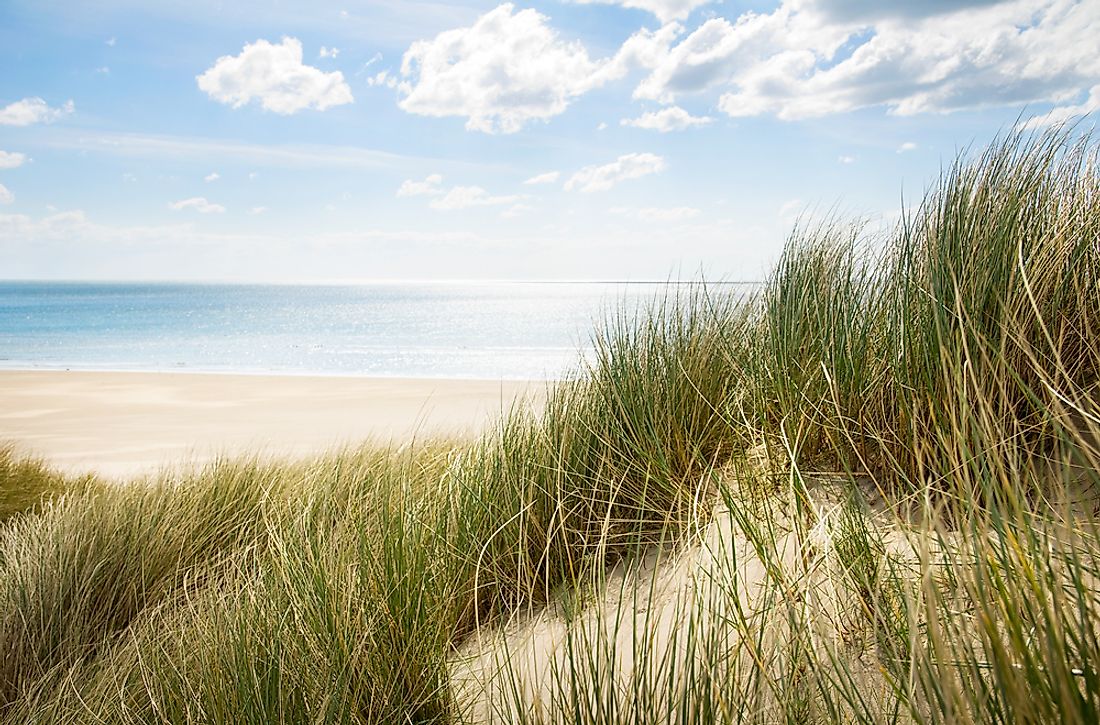What Are Landforms of Deposition?

What Are Landforms of Deposition?
The earth is made up of landforms that define its landscape and beauty. Landforms are natural features on the surface of the earth that make up a given terrain. Examples of landforms include hills, mountains, and shoreline features. They may increase in size if sediments, soil, and rocks are added to them. A geological process in which sand and pebbles are added to landforms is known as deposition. The landform of deposition occurs when an accumulation of sediments and sand is greater than its removal. The high rate of accumulation of sand is particularly common where constructive waves are frequent or where there is a large quantity of sand on the beach.
Beaches and Related Features
Beaches form a boundary or barrier between land and sea and have three main sections which are nearshore, foreshore, and backshore. Backshore features sand and other material deposited by the sea waves. The gradient of a beach changes depending on the time of year. The constructive waves are more frequent in the summer while the destructive waves are common in the winter. The constructive waves deposit large sediments at the top of the beach leading to its build-up. The beach’s backwash becomes weaker because water is drained away by percolation instead of flowing down the beach. Ridges and runnels are formed parallel to the shoreline in the foreshore area. Ridges are raised above the adjacent shores which dip into runnel. The two features are formed by the interaction of tides and beach terrain and are only formed on beaches that have shallow gradients. Other series of smaller ridges known as berm can be formed beneath the storm ridges that make high tides to successively follow the spring tide. Cusps are also beach features that are formed at the junction between sand and shingle.
Spits and Related Features
Spits are landforms of deposition that are formed when the coast abruptly changes direction. Longshore drifts will continue to deposit sand or sediments across the river mouth resulting in the creation of a long bank of sand such as Spurn Head at the mouth of Humber Estuary. A spit may form a recurved end if the prevailing wind and waves change direction. After a certain period, several recurved ends may be formed as waves resume their dominant position. A bar is formed when a spit links two headlands. Bars are more pronounced at low tides because they cause the water to be shallow making the water waves break. A bar may lead to the formation of a lagoon within a bay. A tombolo is formed when the spit links the mainland and an island.
Dunes
A dune is created when sand deposits are blown off the beach and dried in the intertidal zone. Sand dunes are formed when the rate of sand deposition is higher than erosion. The dried sand at the top of the beach is trapped by debris such as rocks and pebbles. The sand dune may be colonized by plants or may increase in size, thus trapping more sand. Sand dunes are formed in stages from embryo dunes to dune ridges.











